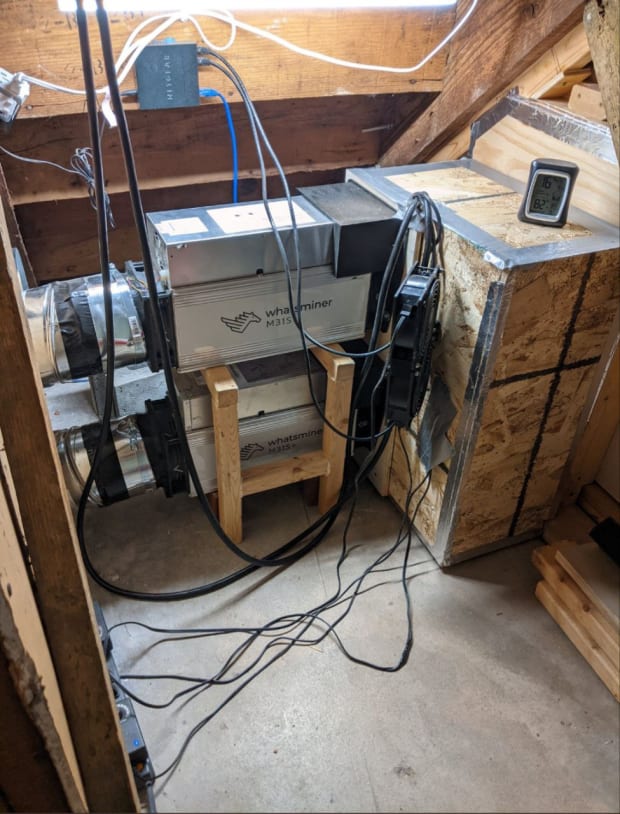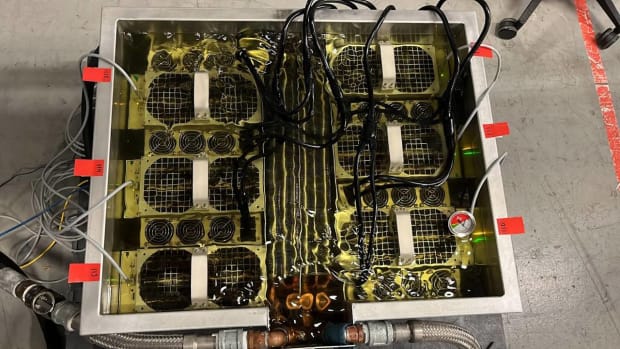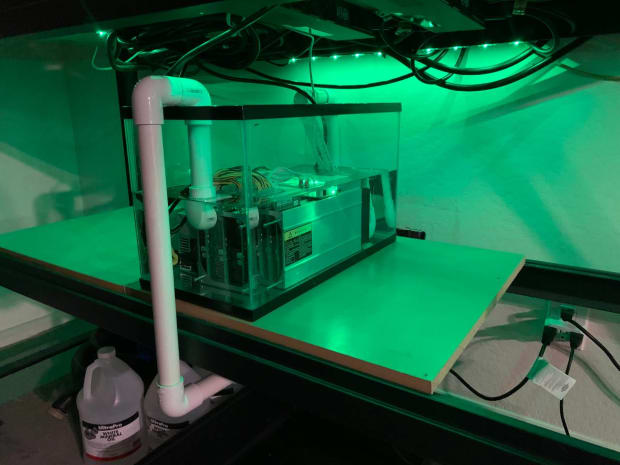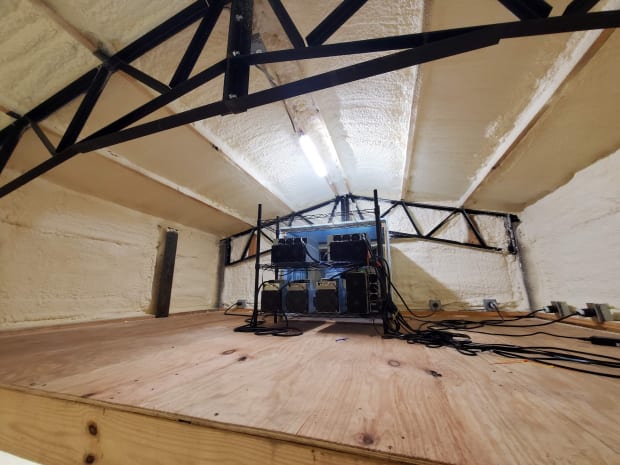At-home bitcoin miners are the backbone of a decentralized Bitcoin network. Celebrating Pleb Miner Month in September puts the focus back on the little guy.
This is an opinion editorial by Barnminer, a Bitcoiner focused on improving self-sovereignty and onboarding home miners.
Bitcoin mining began at home with Satoshi Nakamoto mining the first 50 bitcoin in the genesis block on what would likely be considered an antiquated desktop computer by today’s standards. Mining has since morphed into a multibillion-dollar industry with fiat-style publicly traded mining behemoths with market capitalizations well into the billions. This includes large companies such as Marathon Digital Holdings, Riot Blockchain, Hut 8 Mining, Hive Blockchain and the like.
This article is not about mining whales or public fiat companies. It is about the little guys: the men and women running an Antminer S9 to heat their home; the immersion nutjobs dropping electronics into dielectric liquid and heating their pools, hot tubs and radiant floors; even the two-megawatt ballers that share rack space for one or two local Bitcoiner brothers and sisters.
One of my biggest motivators and mentors started in his garage. He is now running a private farm in a repurposed industrial building. He once reached out to me in a Telegram group to offer his input on my build. This is the kind of person I want to discuss.
Don’t get me wrong, there are some based big boys, but they’re not the topic here. Bitcoin was always designed to be decentralized and available to all. Anyone who wants to mine should be able to mine. There are large mining conferences catered to big businesses and anyone who can pick up an $800 ticket to the show plus airfare, hotel, food and beverage funds. You can easily drop $2,000 in a two- or three-day event.
These can be great networking events and there can be actionable educational workshops. However, there is not a single mining event that is truly Bitcoin-only. The leaching of “super altcoin token bonanza” is apparent as soon as you scan your RFID tag to get into the conference. Personally, this year I’d rather pick up another ASIC at these lower prices or buy some spare hardware right now.
Enter: Pleb Miner Month
Jon and Sarah DiGiacomo, MaxBitBuyBit and a group of other miners are planning Pleb Miner Month in September.
This will include long-form interviews to highlight small-scale and home miners as well as the organizations and people that support them. There will be some short features like “Bitesize Bitcoin” and “FUD Busters” covering various mining-related topics. Throughout the month of September, we will be raffling mining equipment and accessories.

Pleb Miner Month is not just for Bitcoin Plebs, but for their families as well. Children are encouraged to get involved; our kids will be! Kids can ask questions that will be answered by the Pleb Miner Month crew at Ungovernable Misfits. Some of the participants will have their kids producing “Bitesize Bitcoin” recordings as well.

Jon DiGiacomo made a statement to start off this celebratory month:
“Nakamoto was obviously the first Bitcoin miner; it’s estimated that he had up to 48 CPUs mining with another controlling the operation and/or on standby to protect against a 51% attack. The signature of his mining was later analyzed by Sergio Demian Lerner, he dubbed Nakamoto’s miner as Patoshi and its signature as the ‘Patoshi Pattern.’ Nakamoto mined solo until he invited Hal Finney and Martti Malmi to join in the network. Famously, on January 10, 2009, at 10:33 p.m., Hal Finney was ‘Running bitcoin,’ soon others joined in. It’s fascinating to look back at those first blocks; difficulty of one, block reward 50 BTC, the delicate balance of the 10-minute mark was not quite there yet. In reviewing this short Bitcoin history lesson, we bring light to the fact that Nakamoto wasn’t running a giant mining operation with a cool name, a board, investors, and billions in capital expenditures. He was possibly in his basement, garage, his lab, if you will. He shared the code with associates he knew online. Their goal was to discover blocks and secure the network. He mined because he was passionate about the innovation that he built. He was the first miner, he was a pleb miner. Sometime in May 2010, Nakamoto turned off the Patoshi miner, confident that he had passed the torch onto the next generation of miners.
“At an all-time high block-height later, Bitcoin is still running. Much of the hash rate on the network is coordinated through large mining pools, like F2Pool, Antpool, Binance, and Foundry. Companies like Core Scientific and Marathon Digital control a commanding amount of the Bitcoin network’s hash rate, but 30% of all blocks ever discovered are labeled as being discovered by ‘unknown’ and almost 20% of all blocks categorized as ‘other’ (or extremely small miners). There’s something beautifully mysterious about the fact that almost 364,000 blocks, approximately one-half of all blocks discovered throughout the timechain of various block rewards, have been discovered by ‘anonymous’ miners. That fact conveys the sentiment that not all the hash rate is controlled by pools or large mining operations, that individuals have had an enormous contribution to the network, individuals like pleb miners.
“Everyone has their own definition of a bitcoin pleb. It’s not defined by the amount of time you’ve been in Bitcoin, the number of sats in your stack or how many followers you have on Twitter. The same can be said of a pleb miner. Being a pleb miner is not defined by your total hash rate, how many watts are required to run your operations, or the complexity of your setup. The title is not something that someone bestows upon you or issues you a rite of passage. A pleb miner is simply a Bitcoiner who mines bitcoin. A pleb miner is dedicated to the Bitcoin network, contributing their hash not only for the chance at finding the next block and receiving the block subsidy and transaction fees or helping his pool find the next block for a share of the reward, but hashing because they know in their hearts that securing this network is a moral imperative. They mine because Bitcoin is a chance for humanity to restore sovereignty to the individual and to the family. They heed the clarion call that sound money leads to freedom. They mine knowing that for Bitcoin to be decentralized, they must be the ones to do it. Their motivations aren’t to gain more fiat, their motivations are to stack more sats and in doing so, they innovate and collaborate with other plebs, share their mistakes as well as their triumphs. They spend time on chats offering advice to the new pleb miners as well as learning even from the newest in our ranks, they make guides, videos and how-to’s. They share pictures of their setups, not only to share in their innovations and to be critiqued, but because they are proud of their work, as they should be. Proof-of-work is not just a motto for the pleb miner, it’s a way of life. Pleb miners come from all backgrounds, locales, and experiences. They bring various skill sets and craft.
“To be a successful pleb miner, you quickly learn many trades. Mining encompasses several science and mathematical concepts: basic physics, electricity, thermodynamics, acoustics and cryptography. Pleb miners quickly become proficient if not masters at skilled trades: electrician, IT, HVAC, plumbing, welding, carpentry and more. The pleb miner knows that mining is much more than plugging in machines.
“This month is dedicated to you, the pleb miner, the stalwart that defends the network, the unsung anti-heroes of Bitcoin. No influencers, no thinkbois, just plebs plugging in machines and hashing. The same way Nakamoto and Finney did, thousands of blocks ago. In this way, we are all Satoshi.”

This group of small-scale miners are banding together to provide a month’s worth of content to share home mining best practices. We learn from one another and can pass that knowledge to others. Enjoy and participate in Pleb Mining Month. Here are resources that have helped me along my journey:
- Mining for the Streets
- Home Mining for Non-KYC-Bitcoin
- Mining at Home as a Pleb
- Mining Bitcoin in an Apartment
- Coin Heated
- Immersion Mining and Waste Heat Reclamation
- Bitcoin Mining Block Post
- Barnmine Build
Mining-related Telegram groups:
- Home Mining Wizards
- Miners Peak
- WhatsMiner Community
- Oil, Gas and Bitcoin
- Miner Repair
- Immersion Cooling Technology Talk

This is a guest post by Barnminer. Opinions expressed are entirely their own and do not necessarily reflect those of BTC Inc. or Bitcoin Magazine.













